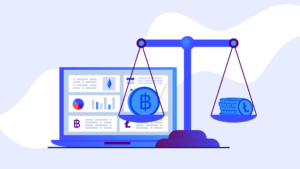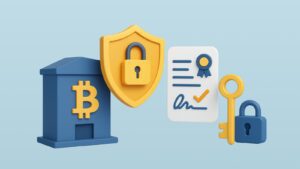
The rapid rise of digital asset trading has made crypto exchanges the backbone of the financial future. Building such platforms requires more than just a good idea—it demands a carefully selected technology stack to ensure speed, scalability, and security. By 2025, the ecosystem has matured with tools and frameworks that allow developers to craft robust and compliant systems. Below is a breakdown of the best tools and technologies shaping the landscape.
Frontend Frameworks — Crafting Intuitive User Interfaces
The first point of interaction for traders is the exchange interface, and performance at this layer defines user retention.
-
React / Next.js
React continues to dominate for its modularity and real-time capabilities. Next.js enhances React with server-side rendering and static generation, offering SEO-friendly experiences. Together, they allow exchanges to manage thousands of concurrent UI updates without compromising performance.
-
Vue.js
Lightweight and approachable, Vue.js is ideal for rapid prototyping of dashboards or feature iterations in crypto platforms. Its reactive ecosystem gives flexibility in managing live charts and order books.
-
Angular
For enterprise-scale exchanges, Angular provides a complete, TypeScript-driven solution. It supports modular architectures, making it effective for handling complex workflows such as KYC dashboards or regulatory compliance modules.
-
Styling Libraries
Tailwind CSS, SCSS, and Quasar are powering crisp, responsive UIs while minimizing style bloat. Their utility-first philosophy ensures faster builds of custom layouts without unnecessary code overhead.
Backend Engines — Handling Heavy Loads
The backend of an exchange is where performance and scalability matter most, especially when trade matching requires millisecond precision.
-
Node.js
With asynchronous, event-driven processing, Node.js handles real-time updates efficiently, making it a reliable backbone for web applications.
-
Go (Golang)
Its concurrency model is unmatched for high-frequency trading systems. Golang is especially relevant for matching engines and microservices that deal with live data streams.
-
Rust
Rust merges safety and performance, minimizing runtime errors. It’s becoming a favorite for building the trading engine core where high throughput and reliability under market stress are essential.
-
Python/Django
While not the fastest, Python excels in auxiliary services like analytics dashboards, user onboarding flows, and compliance reporting. Its clean syntax makes long-term maintenance straightforward.
Data, Caching, and Real-Time Communication
Handling market data requires a mix of structured databases, cache systems, and real-time protocols.
-
Relational Databases
PostgreSQL and MySQL remain solid choices for structured trade and user data. Their transactional integrity supports accurate record-keeping.
-
NoSQL Databases
MongoDB and Cassandra manage unstructured and high-volume data like trading logs or blockchain metadata. They scale easily across clusters, making them valuable for global exchanges.
-
Redis
Known for ultra-fast caching, Redis accelerates order book queries, session management, and live price feeds.
-
Communication Protocols
WebSockets, gRPC, and REST APIs form the backbone of real-time communication. From updating price charts to connecting external liquidity providers, these protocols ensure seamless interaction between systems.
Blockchain Integration and Smart Contract Solutions
Exchanges cannot function without strong blockchain connectivity and smart contract capabilities.
-
Ethers.js / Web3.js
These libraries facilitate token transfers, contract calls, and blockchain event monitoring. They are crucial in connecting user interfaces with blockchain networks.
-
Blockchains
Ethereum, Solana, and Binance Smart Chain dominate choices based on transaction fees, ecosystem maturity, and throughput. Exchanges often support multiple blockchains to widen asset availability.
-
Development Frameworks
Tools like Truffle, Hardhat, Remix IDE, and Ganache provide testing, debugging, and deployment environments for decentralized features. They streamline the process of integrating tokens and ensuring smooth trading.
Here, many platforms also experiment with white label decentralized exchange models, allowing businesses to deploy customized marketplaces without building from scratch.
Enterprise-Grade Security and Cryptography
Security is not negotiable. In 2025, cryptography standards and secure libraries ensure resilience against threats.
-
Intel Cryptography Primitives Library
Released in 2025, it offers optimized AES, SIMD, and even post-quantum readiness—helping exchanges future-proof their security.
-
Libraries
OpenFHE, PALISADE, and Crypto++ enable advanced use cases like homomorphic encryption, protecting sensitive trading data without performance degradation.
-
Wallet Security
Blending hot and cold wallets with multi-signature access remains essential. Integrating secure hardware modules ensures private key integrity.
Such infrastructure forms the foundation of advanced crypto exchange solutions, which demand resilience under cyberattacks while still delivering high throughput.
Infrastructure, Compliance, and AI Add-Ons
Operating at scale requires global-grade infrastructure along with compliance systems to satisfy regulations.
-
Cloud Platforms
AWS, GCP, and Azure ensure automatic scaling, failover management, and DDoS protection. They are critical in supporting millions of concurrent connections.
-
KYC/AML Tools
Providers like Jumio, ShuftiPro, and Sumsub, along with investigative analytics from Chainalysis or TRM Labs, form the compliance layer. Without these integrations, global licensing becomes nearly impossible.
-
Wallet Management
Liquidity requires seamless integration with external providers. Automated balancing between hot and cold wallets guarantees fund availability and safety.
-
AI Enhancements
From trading bots to fraud detection and natural language chat support, AI has become deeply embedded. Predictive analytics also helps traders and admins forecast liquidity shifts.
In this context, many operators also leverage crypto market maker companies, which provide liquidity engines to maintain healthy order books and reduce slippage.
Specialized Trading Features
Beyond the basics, modern exchanges also integrate advanced features for competitive edge:
-
Derivatives Trading Software
Enables futures, options, and perpetual contracts. These require highly optimized engines for accurate margin calculations and risk management.
-
Automated Market Maker Protocols
AMM-style liquidity pools continue to support decentralized ecosystems. Hybrid models that combine AMMs with order books are increasingly common.
Exchanges adopting these innovations not only provide competitive trading but also establish trust through transparent mechanisms.
Start Your Crypto Exchange the Smart Way
By 2025, the toolkit for building crypto exchanges has become mature, reliable, and diverse. From React frontends to Rust backends, from Redis caching to Ethers.js blockchain connectivity, each layer of the stack serves a precise purpose. Security libraries and compliance integrations make these systems enterprise-ready, while cloud and AI extend their capabilities.
When combined thoughtfully, these technologies create resilient infrastructures capable of supporting the fast-paced world of digital trading. Whether using advanced crypto exchange solutions or tapping into liquidity via crypto market maker companies, the right stack empowers teams to launch platforms that are both scalable and future-proof.






